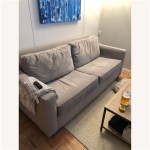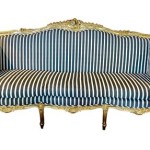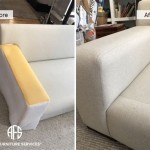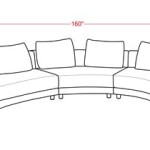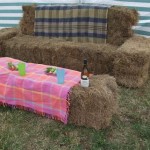The Enduring Appeal of the Old Fashioned Sofa
The old fashioned sofa, often characterized by its distinctive design elements and construction techniques, continues to hold a prominent place in the realm of interior design. Beyond mere functionality as seating, these sofas evoke a sense of nostalgia, craftsmanship, and enduring quality. Understanding the defining characteristics, historical context, and restoration considerations associated with old fashioned sofas is crucial for those seeking to incorporate these pieces into their living spaces.
Defining an "old fashioned" sofa can be challenging, as the term encompasses a broad range of styles and eras. Generally, it refers to sofas crafted prior to the mid-20th century, although interpretations can vary depending on individual preferences and regional variations. These sofas are often distinguished by their use of traditional materials, intricate detailing, and adherence to specific design aesthetics prevalent in their respective periods of origin.
The construction methods employed in crafting old fashioned sofas typically differ significantly from modern techniques. Hand-tied coil springs, solid wood frames, and natural materials like horsehair or down for cushioning are characteristic features. Upholstery fabrics often consist of durable materials such as velvet, linen, or tapestry, reflecting the emphasis on longevity and aesthetic appeal. The level of detail in the carving, stitching, and overall design frequently showcases a higher degree of artisanal skill compared to mass-produced contemporary furniture.
The appeal of old fashioned sofas extends beyond their aesthetic qualities. They often represent a connection to the past, embodying the design sensibilities and social customs of bygone eras. These sofas can serve as focal points within a room, adding character, depth, and a sense of history. Furthermore, the robust construction and use of quality materials contribute to their durability, making them potentially long-lasting investments when properly maintained.
Identifying Key Characteristics of Old Fashioned Sofas
Several key characteristics distinguish old fashioned sofas from their modern counterparts. These features provide valuable clues in identifying the age, style, and overall quality of a particular piece.
Frame Construction: The frame of an old fashioned sofa is typically constructed from solid hardwood, such as oak, mahogany, or walnut. These woods were chosen for their strength, durability, and ability to withstand the rigors of regular use. The joints are often reinforced with mortise and tenon joinery, a traditional woodworking technique that provides exceptional stability. Evidence of hand-crafting, such as subtle variations in the wood grain or hand-carved details, can further indicate the age and quality of the frame.
Spring System: The spring system is a critical component of a sofa's comfort and support. Old fashioned sofas often utilize hand-tied coil springs, which are individually sewn to the frame and then connected to each other with twine. This intricate system provides a more even distribution of weight and superior support compared to modern sinuous springs or webbing. The condition of the springs can significantly impact the sofa's comfort and should be carefully assessed when evaluating a potential purchase.
Upholstery and Filling: The upholstery fabrics used on old fashioned sofas typically reflect the styles and materials prevalent during their period of origin. Velvet, damask, tapestry, and leather were common choices, often adorned with intricate patterns and embellishments. The filling materials used for cushioning were also natural, such as horsehair, down, cotton batting, or a combination of these. These materials provide a unique level of comfort and support that differs from modern synthetic fillings. The type and condition of the upholstery and filling can provide insights into the sofa's age and history.
Design Details: Old fashioned sofas often feature distinctive design details that reflect the aesthetic sensibilities of their era. These details might include carved wooden legs, decorative nailhead trim, button tufting, or elaborate armrests. The style of these details can help to identify the specific period or design movement to which the sofa belongs. For example, a sofa with cabriole legs and ornate carvings might be indicative of the Queen Anne style, while a sofa with clean lines and minimal ornamentation might suggest a Mid-Century Modern design.
Examining these characteristics allows for a more informed appreciation of the craftsmanship and historical significance embodied in old fashioned sofas. It also assists in determining the authenticity and potential value of a particular piece.
Historical Context and Design Styles
Understanding the historical context and design styles associated with old fashioned sofas can enhance appreciation and facilitate informed decision-making when acquiring or restoring these pieces.
Victorian Era (1837-1901): Victorian sofas are characterized by their ornate detailing, plush upholstery, and overall sense of opulence. Deep button tufting, rolled arms, and dark wood frames are common features. Upholstery fabrics often include velvet, damask, and tapestry, adorned with floral patterns and rich colors. The emphasis on comfort and visual appeal reflects the Victorian era's focus on domesticity and social status.
Edwardian Era (1901-1910): Edwardian sofas represent a transitional period between the Victorian era and the Art Deco movement. While still retaining some of the ornate detailing of the Victorian period, Edwardian sofas tend to be lighter and more streamlined. Floral patterns remain popular, but colors often become softer and more pastel. The emphasis shifts towards greater comfort and functionality.
Art Deco (1920s-1930s): Art Deco sofas are characterized by their geometric shapes, bold colors, and luxurious materials. Streamlined silhouettes, chrome accents, and exotic woods are common features. Upholstery fabrics often include velvet, leather, and silk, adorned with geometric patterns or stylized motifs. The Art Deco style reflects the era's fascination with modernity, technology, and glamour.
Mid-Century Modern (1940s-1960s): Mid-Century Modern sofas are distinguished by their clean lines, minimalist design, and emphasis on functionality. Sleek silhouettes, tapered legs, and neutral colors are common features. Upholstery fabrics often include durable synthetics, such as vinyl or nylon, reflecting the era's embrace of new materials and technologies. The Mid-Century Modern style emphasizes comfort and practicality.
Knowing the characteristics associated with these and other design styles allows individuals to choose old fashioned sofas that align with their personal preferences and complement their existing decor. It also provides context for understanding the historical significance and cultural influences that shaped the design of these pieces.
Restoration and Maintenance Considerations
Restoring and maintaining old fashioned sofas requires careful consideration of their age, materials, and construction techniques. Proper care can help to preserve their beauty, extend their lifespan, and maintain their value.
Frame Repair: Inspecting the frame for signs of damage, such as cracks, loose joints, or woodworm infestation, is crucial. Minor repairs can often be performed by a skilled woodworker, while more extensive damage may require professional restoration. Reinforcing weakened joints and replacing damaged wood can help to restore the frame's structural integrity.
Spring Replacement: If the springs are sagging, broken, or otherwise compromised, they may need to be replaced. Replacing hand-tied coil springs is a complex process that requires specialized skills and knowledge. It is often best to enlist the services of an experienced upholsterer who is familiar with traditional spring systems.
Upholstery Cleaning and Repair: Cleaning and repairing the upholstery requires careful consideration of the fabric type and condition. Gentle cleaning methods, such as vacuuming or spot cleaning with a mild detergent, are often recommended. More extensive cleaning may require professional upholstery cleaning services. Minor tears or holes can sometimes be repaired by a skilled tailor or upholsterer.
Reupholstery: Reupholstering an old fashioned sofa can dramatically enhance its appearance and extend its lifespan. Choosing a fabric that is consistent with the sofa's original style and era is important for maintaining its authenticity. An experienced upholsterer can provide guidance on fabric selection and ensure that the reupholstery process is performed to the highest standards.
Preventative Maintenance: Regular dusting, vacuuming, and spot cleaning can help to prevent the buildup of dirt and grime. Protecting the sofa from direct sunlight and extreme temperatures can also help to preserve its upholstery and finish. Applying a fabric protector can help to repel stains and spills.
By addressing restoration needs promptly and implementing a consistent maintenance routine, owners can ensure that their old fashioned sofas remain cherished heirlooms for generations to come. Consulting with qualified professionals, such as antique furniture restorers and experienced upholsterers, is highly recommended for complex repairs or restoration projects.
Classic Traditional Sofas Guide Dfs

European Style Antique Sofa Set Furniture Living Room Genuine Leather Classic Sofas China Made In Com

Plushly Perfect Vintage French Sofa With Channeled And On Seat Back Casa Victoria Furniture Los Angeles Sunset Boulevard

Antique Sofa Dating Back To The 1800 S Vintage Couch Style

Vintage Leather Sofa Bed Beds

Antique Style Wooden Sofa Set Living Room

Is A Traditional Sofa Best Suited For Your Home Let S Find Out

Oe Fashion Luxury Antique Sofa Set One Seater As15 Living Room

Rectangular 3 Seater Wooden Antique Style Sofa Set For Home

Luxury Vintage Sofa Suite Handcrafted By Wellington Chesterfield


